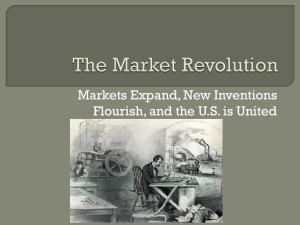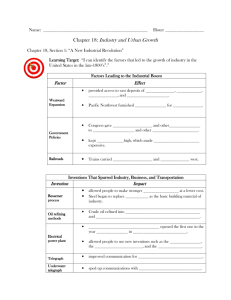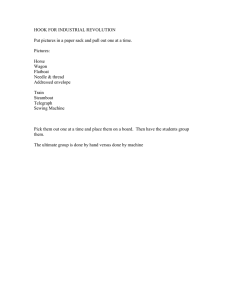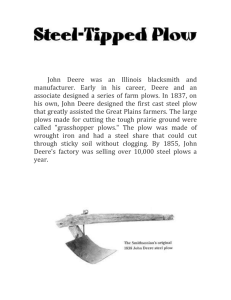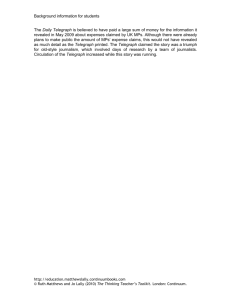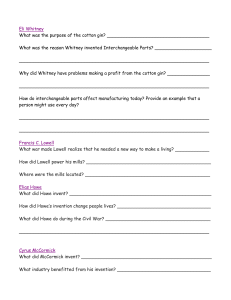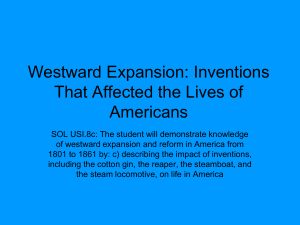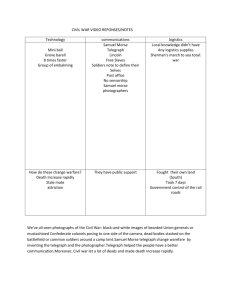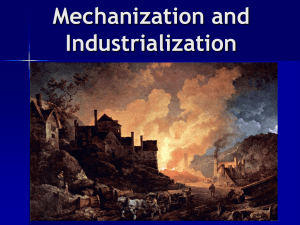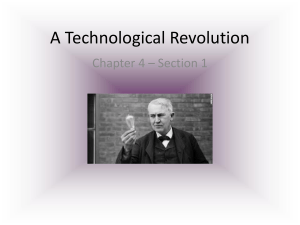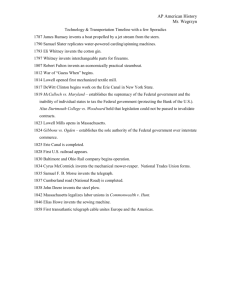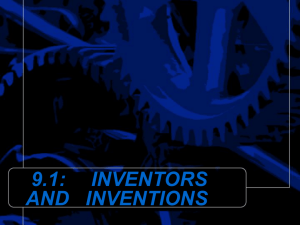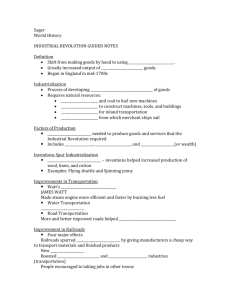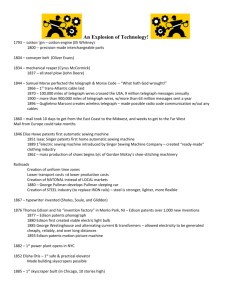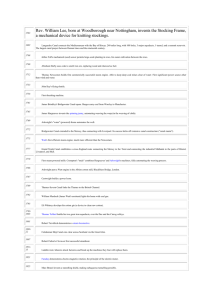The Market Revolution
advertisement
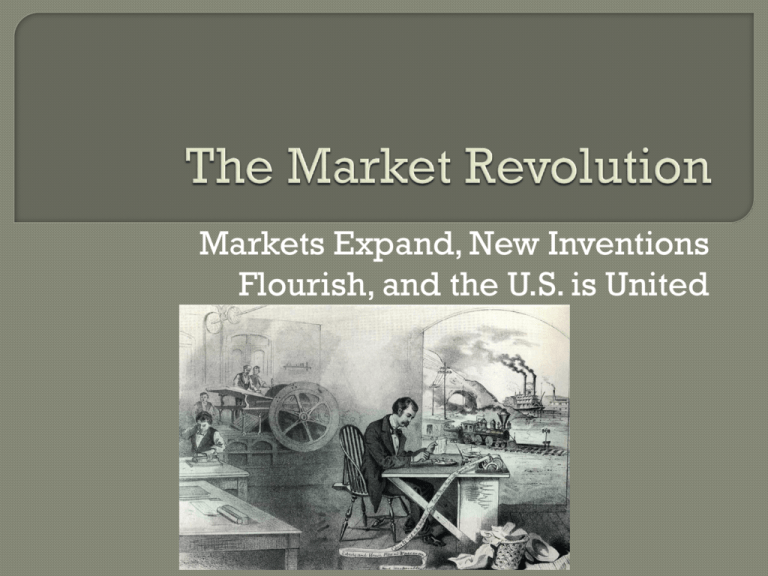
Markets Expand, New Inventions Flourish, and the U.S. is United The early 19th century economy was based on rural farms and cottage industry. Many goods were made in the home and sold at local markets. These families would only buy what they couldn’t produce. Items such as coffee, tea, sugar, and horseshoes could be bought at these markets. The rise of industrialization led many of these farmers to specialization– a term referring to the raising of cash crops for sale rather than self-sufficiency. This led to a market revolution, a time when people bought and sold goods rather than making them for their own use. Capitalism fueled the market revolution, and this economic system depended on private businesses and individuals to control the means of production. Capitalism influenced the use of land, factories, and machines for profit. Private investors took serious risks with their own money to expand and develop the markets. These people became known as entrepreneurs; a French term meaning “to undertake.” An example of an entrepreneur at the time was Francis Cabot Lowell and other Boston merchants who raised $400,000 to form the Boston Manufacturing Company. They soon controlled the market with the production of textiles. Charles Goodyear invents vulcanized rubber in 1839. It can withstand both higher and lower temperatures. Elias Howe invents the sewing machine in 1846, which is improved by I.M. Singer with the addition of a foot treadle. These inventions helped with the textile boom of the mid-19th century. They sped up the production of clothing, as well as enhancing the quality and comfort of life. Samuel F. B. Morse created the telegraph in 1837. This device transmitted coded messages through copper wires. Telegraph wires soon connected the larger cities on the East coast, and businesses could now relay information easily and place orders fast. By 1854, 23,000 miles of wire had been laid and crossed the country. What other uses could the telegraph have that helped the economy and transportation at the time? As industry and agriculture grew, so did the need for better and faster shipping. Robert Fulton began the steamboat era with his steam engine powered boats. Canals helped to facilitate the shipment of goods on rivers, and also reduced the price of shipping goods. Railroads replaced the steamboat era by the 1860’s. Railroads were faster and could operate in all weather conditions, but were still more expensive. The improved transportation and communications caused the various regions of the US to become interdependent. The Northern factories required the food of the West and raw materials of the South, and the North provided the US with manufactured goods. The South looked down on industry and many had their money tied up in land and slaves. The North became the center of commerce due to advances in communications and transportation. NYC became the link between American agriculture and European markets, and more cotton was exported through NYC than any other US city. As industry spread in the Northeast, many escaped to the quieter, less populated midwest to farm. The land was tough to cultivate, but thanks to John Deere and Cyrus McCormick, this problem was solved Deere’s steel plow sliced through the hard soil and allowed for horses to pull the plow rather than oxen, and McCormick’s mechanical reaper allowed for the harvesting work of 5 men to be done by only 1. HW: SpNotes Research Leave Have 9.2 Outlines need to be checked! the room better than you found it! your job lists signed.
